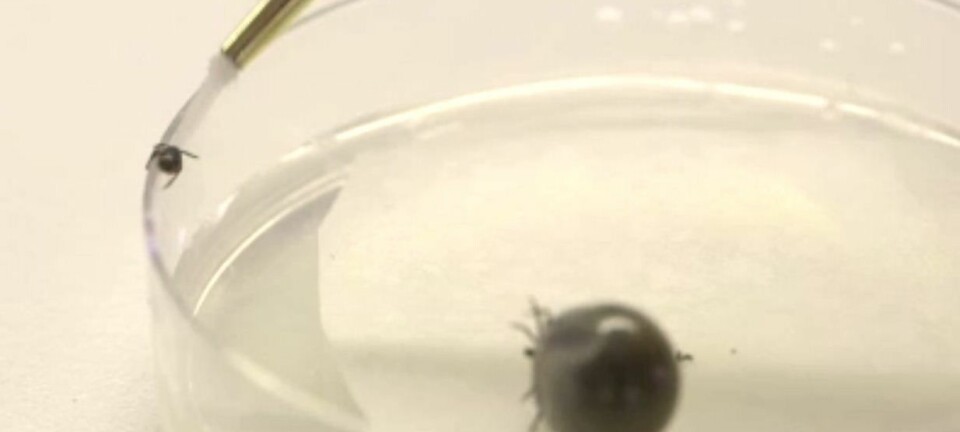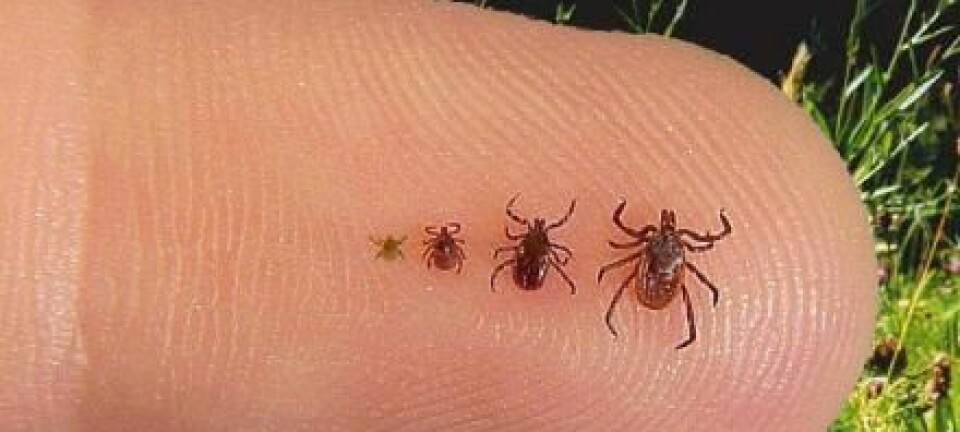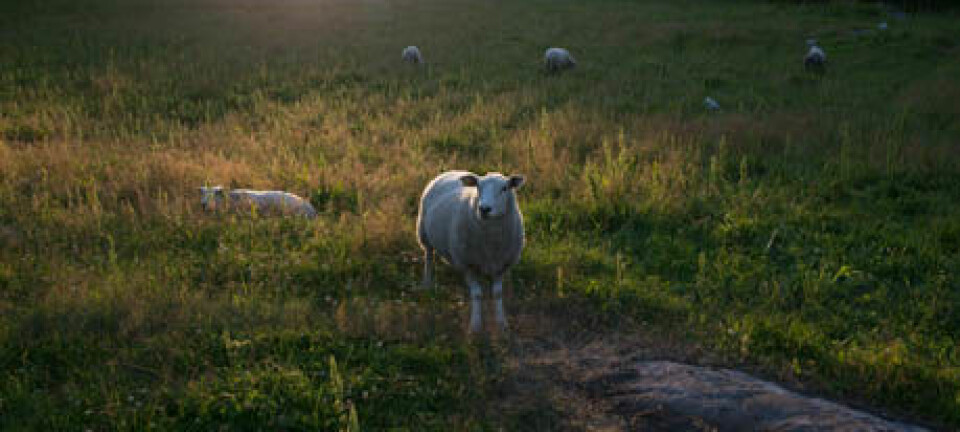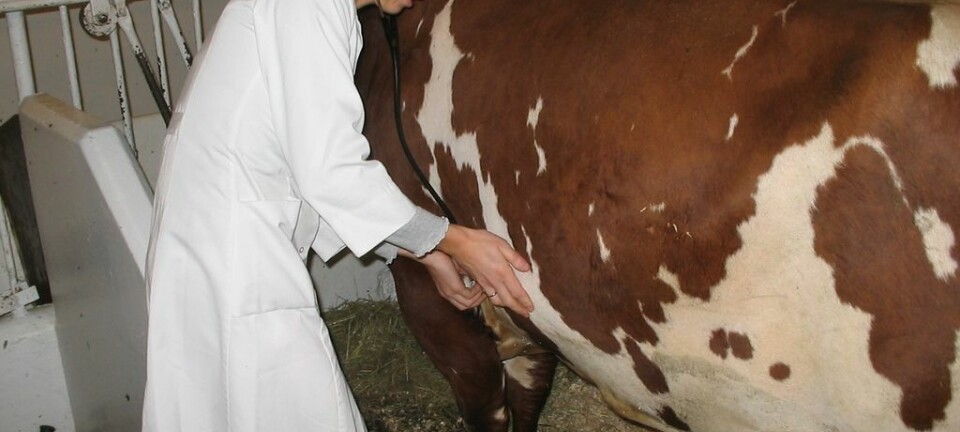An article from University of Oslo

Don't blame the deer for ticks
Cases of the tick-borne Lyme disease have increased in recent years, but this cannot be explained solely by the increasing population of deer.
Results from the research project TickDeer, recently published in Nature Communications, shows that the percentage of ticks with Borrelia is decreasing in areas with a high deer population (deer, red deer and moose). However, the total number of ticks is higher. This means that the risk of catching Borrelia is not decreasing as much as one could hope for despite the ”clean host”, and all in all a high density of deer give a netto increase in borreliosis.
Good news for the deer population
Since 1991, Norway has registered all incidents with borreliosis in a so-called MSIS-statistics for reportable diseases. At the same time data on the wild deer population over all of Norway has been recorded. This is why Norway has a unique set of data material for comparing the relation between the disease progression over time, says professor Atle Mysterud, who led the project.
In addition the researchers at the TickDeer-project, which represent a cooperation between the Department of Biosciences (University of Oslo), Norwegian Veterinary Institute, and NIBIO, looked at how the number of deer affects the number of ticks, and in particular ticks with Borrelia. The results show that borreliosis has increased more than the density of deer would suggest.
“We see that the incidence of borreliosis has increased in the southern part of Norway in a period of time where both the deer population and the moose population have decreased. This is why we cannot only blame the deer for getting more of these blood-sucking parasites,” says professor Atle Mysterud.

“At the west coast an increase in the population density of deer has resulted in an increase in the incidence of borreliosis. The cycle of the Borrelia bacterium in nature is both complex and is influenced by many different drivers, where the hosts of the ticks in an early life stage can influence the cycle. There is also little doubt that a warmer climate is a contributing factor for the tick-borne diseases, something that we are going to have a closer look at in the newly started #EcoTick-project,” says Mysterud.
It is also likely that the change in the use of the landscape, resulting in more encroachment, has been an advantage for the ticks, he says.
Life as a tick
Ixodes ricinus, the tick that is known for infecting humans in Norway as well as in rest of Europe, has a life cycle that is threefold; larva, nymph, and adult ticks. It needs a blood meal in each of the life stages, but they may have different hosts at different stages. In the first stage it is rodents and birds that become victims of these parasites. In the second stage they usually suck blood from slightly larger animals. It is in the last stage that the tick is an adult and needs blood for reproduction. Then the host is usually a large animal like deer. Deer are therefore frequently referred to as reproductive hosts, and are thought to be important for the population dynamics of the ticks.
Ticks are born pure. That is why the hosts in the first life stage of the tick determine whether it will be a carrier of infection or not. Ticks can therefore only be infected in the second and third stage.
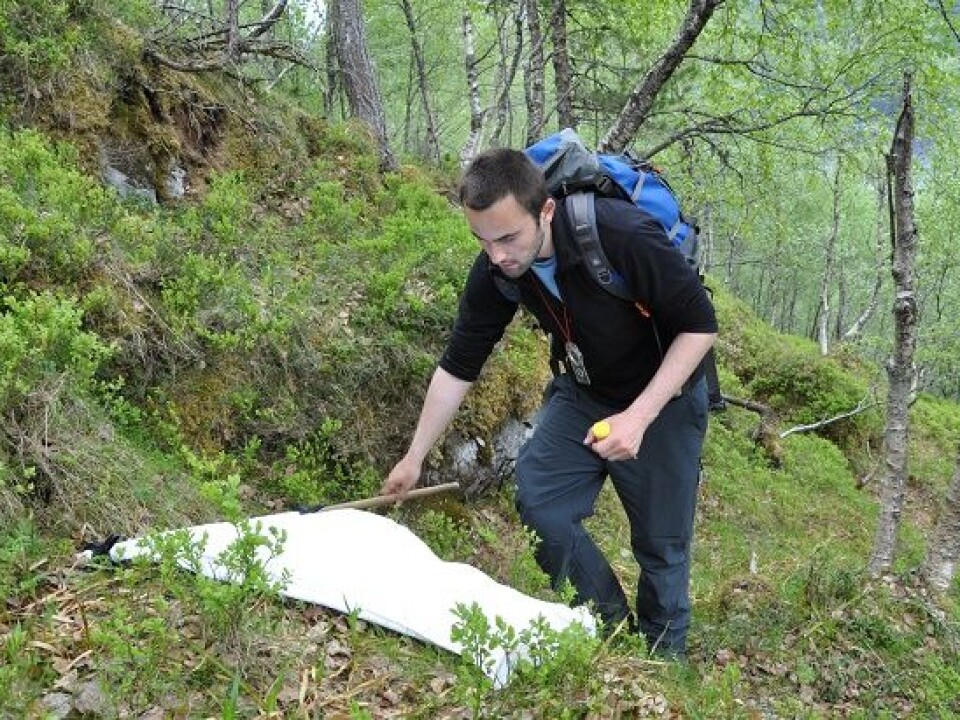
In the third stage, they are quite large, and we often feel that they crawl on the skin. Therefore nymphs are more often inflicting infection, because we do not notice their bite.
More, but cleaner ticks
In the TickDeer-project the researchers have looked at the populations of deer and counted the ticks on the animals and in the landscape by so called “flagging”. In addition, they took samples of the ticks to determine how many of them that contained Borrelia.
Deer contributes to keep the ticks clean since they are not carriers of the Borrelia-bacteria. Therefore ticks that have used deer as a host do not contain Borrelia that can infect us. A dense population of deer contributes overall to more cases of Lyme disease. This is mainly because the deer are a good host for the ticks. However, the relationship is not very strong..
To shoot roe deer, moose and red deer will hardly eradicate the ticks. The exception is if you manage to get the populations to a very low level, such as in closed systems on islands. On the mainland the population density will normally not limit the amount of ticks strongly, unless the measures are extreme.
More ticks diseases are important
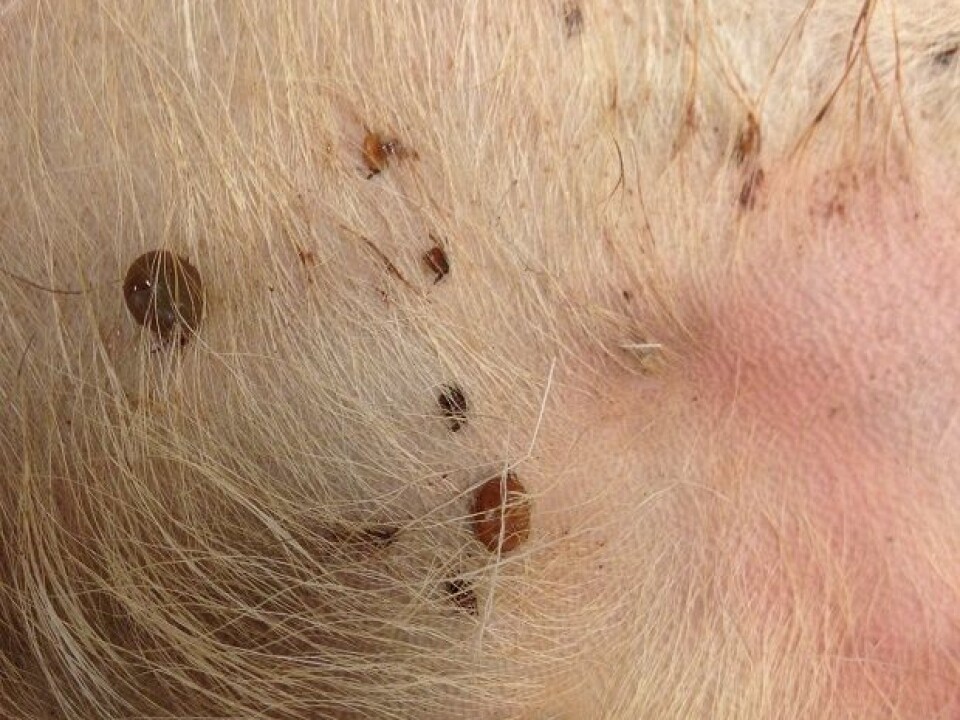
One question researchers hope to answer in the newly started #EcoTick-project is which of the ticks hosts that contain Borrelia bacteria in the first place? It is also interesting to find out to what extent other diseases spread by ticks infects sheep and cattle. The bacterium Anaplasma phagocytophilum cause tick-borne fever in lambs and is believed to be a major cause of death to sheep, especially in western Norway, while Babesia divergence gives the disease babesiosis in cattle. These are diseases that can spread with the change of the agriculture towards more grass fed animals as a part of the green shift in agriculture.
“There is still much we do not know about tick-borne diseases,” concludes Mysterud.
External links
- Atle Mysterud's profile
- Contrasting emergence of Lyme disease across ecosystems
- TickDeer (completed)
- #EcoTick (In progress)







